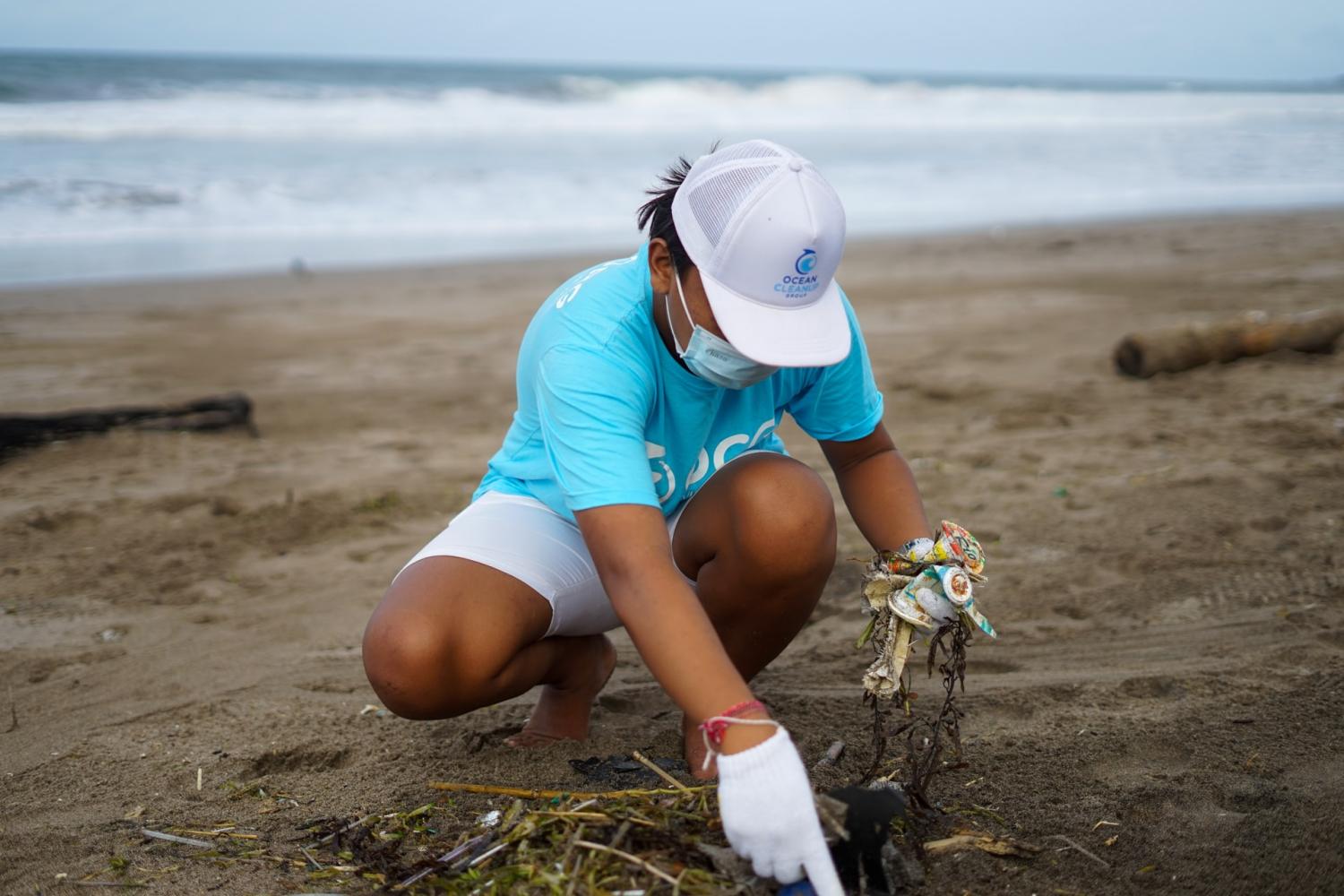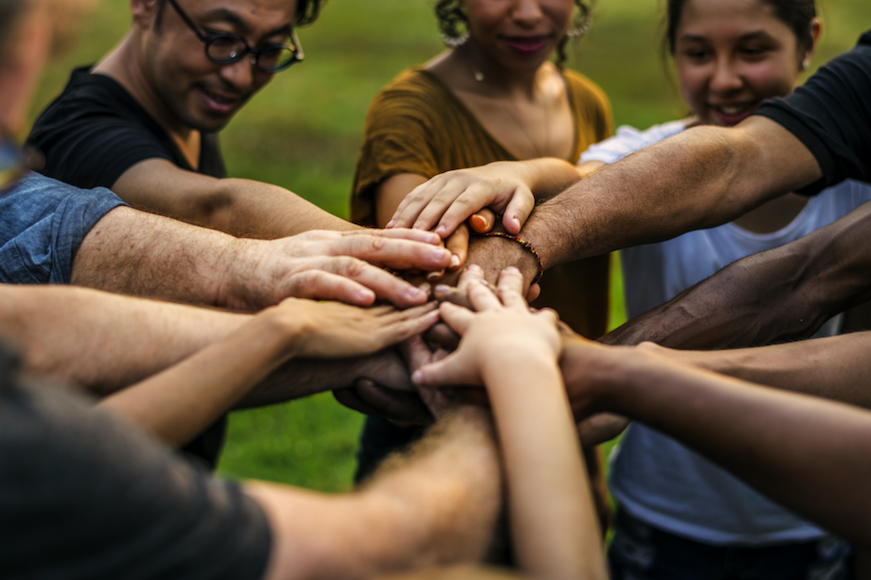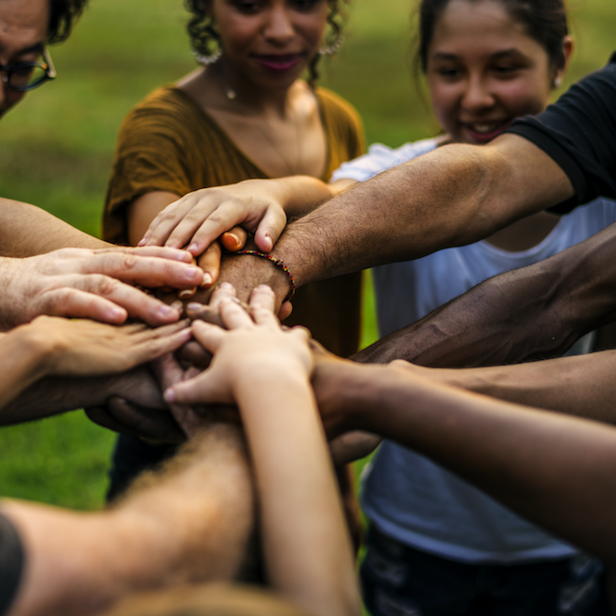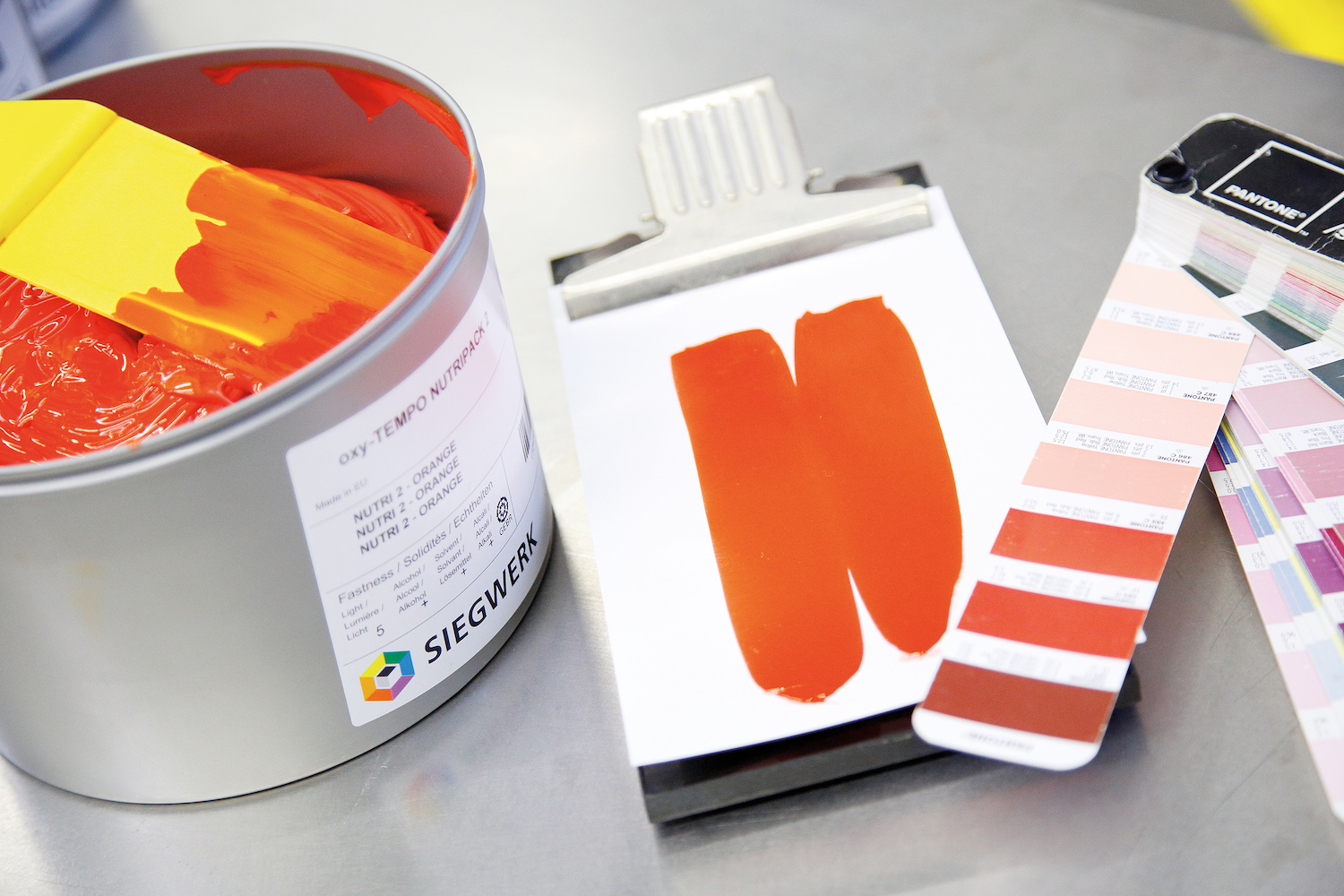Vita Coco Makes a Compelling Case for Becoming a B Corp


Beverage brand Vita Coco Co.’s certification in late February as a B Corporation is not only a recognition of the company’s dedication to conducting its business as a force for good, but it also highlights the power consumers can have to effect change.
“If you’re a consumer, you have a lot of power. The decisions that you make in the store or online affects more than just you,” Jane Prior, Vita Coco's chief marketing officer, told TriplePundit.
Businesses can be certified as B Corporations after the nonprofit B Lab conducts a rigorous review of operations and their business model’s impact on workers, customers, communities and the environment. A company must meet a minimum verified score on B Lab’s impact assessment to be certified.
“We’ve always been on a mission to create more equitable access to natural, better-for-you products in a responsible way,” said Mike Kirban, Vita Coco’s founder and co-CEO, in a public statement. “Joining a network of like-minded organizations will create collective impact to democratize health and wellness. We are honored to receive this distinction and become part of the B Corp community.”
The Vita Coco Project is the centerpiece of the company’s efforts to have a positive impact on farming communities in the Philippines, Sri Lanka and Ecuador where it sources ingredients for its signature coconut water and other beverages. Through the project, the company says it has built more than 30 classrooms, distributed more than 25,000 coconut seedlings to smallholder farms, and increased grower incomes by more than 260 percent in the Philippines and Sri Lanka.
At the same time, Vita Coco’s plant-based energy brand, Runa, partners with the Indigenous Kichwa community of Ecuador to source caffeine-producing guayusa leaves in addition to the planting of 1.2 million trees, according to the project's website. The project’s ambition is to have a positive impact on 1 million people living and working within farming communities worldwide.
Prior told 3p that the coconut farming communities with which Vita Coco works are “incredibly innovative and diligent” but lack sufficient resources, and their remote locations often have deficient infrastructure, outdated farming practices and a shortage of schools.
On the ground, Vita Coco partners with HOPE, a social enterprise and the first B Corp in the Philippines, and Silvermill, an agribusiness group based in Sri Lanka that supports sustainable farming practices.
“Through our partnerships with HOPE and Silvermill, we advance education opportunities for children in the Philippines and Sri Lanka by building over 30 safe classrooms for K-12 education,” Prior said. “By equipping the families of coconut farmers with access to safe and fun schooling environments, we are helping to offset the classroom deficit and invest in their futures with our local on-the-ground partners.”
The Vita Coco Project’s website cites two success stories from coconut farmers in Sarangani Province on the southern Philippine island of Mindanao. Diascora Martin is regarded as one of the project’s most successful farmers, who in a few years has managed to boost her income by 30 percent. This has enabled Martin to expand her farming to include rejuvenated coffee trees and vegetables. She was also able to send her teenaged son to high school instead of having him work on the farm. Abundio and Mimi Bacquiano have seen their family’s annual income increase by 12 percent, allowing them to invest in their youngest child’s college tuition, as well as livestock and a commercial herb garden for their local community.
“HOPE’s access to smallholder farmers in Philippine communities where Vita Coco is manufactured, 60 percent of which live below the poverty line, presented a unique opportunity to not only improve the farmers’ livelihood, but also support the communities as a whole,” Nanette Medved-Po, HOPE’s founder and CEO, told TriplePundit. “Projects like these force us to focus on offering a helping hand to those who are left behind, not due to lack of desire, but due to a lack of opportunity. Together, HOPE and the Vita Coco Project bring hope for the future, and security and dignity for our community.”
Prior said the Vita Coco Project expresses the brand’s commitment “to doing right by people and the planet."
“We partner with our coconut farming communities to encourage long-term sustainable growth in the regions we source from,” she added. “Through our community-led approach with HOPE, we bring our ‘Give, Grow, Guide’ philosophy to life to help coconut farmers increase their annual yield, diversify their crops and grow their coconuts efficiently and sustainably.”
Decisions by consumers help to propel these efforts forward, Prior said.
“By participating in the economy and creating demand for the products you enjoy, like coconut water, you can effect positive change,” Prior explained. “When you choose ethical brands, you help scale programs like the Vita Coco Project to build a thriving community of coconut growers.”
Vita Coco’s certification as a B Corp comes less than a year after it announced its incorporation as a Public Benefit Corporation (PBC).
Image credit: Jakob Owens via Unsplash
Women Are Still Vastly Underrepresented in Cybersecurity


So far, the constant fears about cybersecurity attacks since Russia’s invasion of Ukraine haven’t quite materialized. But that doesn’t mean such attacks won’t happen as the siege on Ukraine continues into its second month. Although some experts say the success of cyberattacks as a tool of warfare are overstated, such attacks against many large companies over the past few years are a reminder that they can happen to anyone or any entity, regardless of size.
As the data have long shown, if an industry wants to be stronger, nimbler and more responsive to the ever-changing nature of business, a more diverse workforce is a way to forge ahead on such a path. Yet this is exactly where the cybersecurity industry falls short, as only about 25 percent of its employees are women.
While recent research on who’s working within this field actually found that the percentage of women employees in the industry is higher than what was previously assumed, there is still plenty of room for improvement.
Jen Easterly, the current director of the U.S. Cybersecurity and Infrastructure Security Agency (CISA), has made it clear recruiting more women into this space is a priority. Easterly has repeated ongoing calls to have women comprise 50 percent of employees within this field by 2030. The CISA has pledged to be more assertive in hiring qualified women, and says it's working with such organizations as Girls Who Code to open up young women’s minds to the possibility of having a career within this sector.
Editor's note: Be sure to subscribe to our Brands Taking Stands newsletter, which comes out every Wednesday.
More companies also appear to grasp that diversity within the cybersecurity field is necessary in order for the industry to adjust to the times and thrive in the long run. In a recent profile on ZDNet, Vasu Jakkal, Microsoft's corporate vice president of security, compliance, identity and management, agreed that women and other workers "with more diverse perspectives" were crucial to help take on ongoing threats as well as help take the pressure off understaffed information technology teams. Microsoft’s own research revealed that more women than men often make the assumption that men are seen as a better fit in the tech sector. And men, at more than twice the rate of women, assume they are more qualified for a typical cybersecurity job.
"I've always felt that cybersecurity is a calling but as our survey shows, the journey isn't always easy," Jakkal told ZDNet senior editor Owen Hughes. "I've often been the only woman or person of color at the table. And, while I've tackled every challenge thrown at me, I sometimes doubted myself and struggled with imposter syndrome. Most of us do — women especially. The important thing is that over time, we find our voice and learn to speak up."
Microsoft’s research found there are more than 2.5 million cybersecurity jobs open worldwide, meaning there is plenty of opportunity for anyone who is qualified. So, what can be done to recruit more women and underrepresented groups into this industry?
At a higher level, Gigi Schumm of Virginia-based ThreatQuotient suggests three overarching strategies. First, companies need to strive to fix those “broken rungs” within their hiring and retainment policies, including unconscious bias and the ongoing denial of offering women the chance to work on high-profile projects. “We tend to think of diversity in leadership,” Schumm wrote. “If you want diversity at the top, you must pay attention to every rung on the ladder. But the reality is, women start to fall behind at the first potential promotion up to the management level.”
Next, all companies need to be transparent in their hiring and promotion data — and this is a case where the federal government is actually ahead of the private sector. “Transparency in employee promotion leads to less subjectivity or unconscious bias, which helps give all candidates equal footing as they move from one rung up to the next,” Schumm added.
Finally, understanding that bias exists can actually boost inclusion and improve gender diversity in any industry, including cybersecurity. One-off events such as hiring someone a manager has known well for years, or hiring from the same small company or competitor, may appear benign on an individual basis. But over time, these habits can actually prove to be exclusive and deny qualified people the chance to excel, as their only shortcoming is not having that connection with the company or manager. “Given the research, it’s clear that many cybersecurity companies have a huge opportunity to improve gender diversity in the work environment. It’s also clear that diversity is good for business on many levels, so no company should want to be left behind,” Schumm concluded.
Image credit: Christina Morillo via Pexels
This Software Company Offers Women a Path to Return to a Post-Pandemic Workplace


Freshworks, a software-as-a-service company with headquarters in San Mateo, California and Chennai, India, recently introduced its Career Restart Program (CRP) in the U.S. The CRP return-to-work program is for women who have been on a career break for more than a year due to family commitments, raising children, the loss of a spouse during the pandemic, personal health issues or any other personal crisis.
Freshworks lays out a plan for women to re-enter the workplace
Freshworks first introduced the CRP in November 2021 in India as the Pledge For Equality program, with the goal of finding female talent in the areas of sales and marketing, product management, and engineering. Eighteen women were selected to complete a 16-week developmental training course, including competency development, on-the-job training and mentoring.
The U.S.-based CRP, in partnership with Women Back to Work, seeks out women for customer support and solution engineer roles, and the two groups works together to place these women for hire.
“We help companies that value diversity and inclusion hire career-ready returners with technical backgrounds through custom returnship programs,” said Sonu Ratra, founder of Women Back to Work, in a public statement. “We look forward to partnering with Freshworks as they continue to tackle gender parity and strive to ultimately reach a 50/50 workforce across the globe.”
In addition to the professional development opportunities provided by Women Back to Work, Freshworks has launched its own 12-week mentorship program, and most importantly, it has committed to offering full-time positions to those who complete the program.
“Our goal for women in leadership roles (director and above) was 20 percent in 2021, which was surpassed, reaching 25 percent globally, and 37 percent for the US at the end of last year," Jayne Gonzalez, Freshworks’ senior director of corporate communications, told TriplePundit. "Our 2022 goal is focused on reaching a saturation point of 40 percent women globally, across all levels.”
After decades of progress, the pandemic forced many women out of the workplace
The trend of working women over the decades has generally tracked with societal influences. For example, in the U.S. before World War II, men were the primary breadwinners in the family, and women were only 28 percent of the labor force. During the era of Rosie the Riveter, associated with the war effort, women flooded the labor market as the only available labor pool as many working-age men were fighting a war. The ranks of women in the workforce then swelled to 37 percent and higher. Necessity of the financial kind also drove women into the workforce. As men returned from the war, some women opted out of the workforce, but the number pursuing higher education increased. Starting in 1979, more women than men have been enrolled in higher education in the U.S.
The COVID-19 pandemic, however, has brought on the opposite effect, as it has largely had a negative impact on the numbers of women who are currently in the workplace.
According to the U.S. Bureau of Labor Statistics, about 2 million women in the United States have left the workforce since the start of the pandemic, roughly since early February of 2020. In 2020, the share of women who took part in the labor force fell by 1.2 percentage points to 56.2 percent, the lowest rate since 1987, and nearly four percentage points below the peak of 60 percent in 1999.
Many women face a long road back to the workplace
In January 2022, almost 4 percent of all women were jobless. However, nearly 5 percent of Latinas and nearly 6 percent of Black women were unemployed. Women with disabilities were most affected, as nearly 8 percent of this group were jobless.
Women have long faced challenges in the workplace, which was usually due to evolutionary and societal circumstances and less with their capabilities, such as child-rearing, the overwhelming rate that women versus men assume the role of primary caregiver and the flexibility women often require based on those roles. Programs such as Freshworks Career Restart, however, offer a needed response has they can assist women with the skills and training to relaunch careers.
These gaps in the career trajectory of women add to the disadvantages that women face, in spite of being more highly educated than their peers were previously, and, to a certain extent, C-suite opportunities for women becoming more common.
Over time, training, employment and “returnship” programs such as Freshworks Career Restart could help close the gap in those disparities.
Image credit: Andrea Piacquadio via Pexels
Shared Sisterhood: The Business Case for Intersectionality


Every year we dedicate the month of March to celebrating women’s contributions to society and culture. While women have shattered many ceilings over time, those gains have not been equal for all women. Take the Suffrage Movement for example: Ratification of the 19th Amendment to the U.S. Constitution allowed white women to vote in 1920, but it took another 45 years before Black women were able to vote. A considerable gap remains not only between women and men, but between women of color and their white counterparts as well.
In a recent gender workplace study commissioned by HP, 45 percent of women of color in the U.S. expressed a desire to be promoted this year, versus 26 percent of white women. However, only 31 percent of women of color received those promotions, compared to 44 percent of white women. Data like this suggest that barriers exist for women of color in attaining leadership positions.
The opportunity to remove barriers starts with a vital mindset shift. A shift from just tackling the day-to-day work to doing it while embracing the value of diversity. In many ways, we’re still in the early stages of this transformation journey. In the workplace, talking about systemic racism and inequality used to be the purple elephant in the room, but the brutal murder of George Floyd opened people’s apertures on the injustices that people of color face. Now, let’s transform that moment into a movement where we keep intersectionality top of mind in everything we do. It’s not just the right thing to do — there’s also a business case for it.
Companies that are ranked the highest in gender diversity in executive levels are 25 percent more likely to have above-average profitability than companies with the lowest gender diversity, according to a 2020 McKinsey report. Companies that ranked highest in cultural and ethnic diversity had 36 percent higher profitability than businesses that lacked cultural diversity.
That’s why as we work to achieve 50/50 gender equality in HP leadership by 2030, we measure and monitor not just gender representation but also intersectionality data in heterogenous markets to ensure women of color have a seat at the table. Diverse representation inspires us to create innovations for all demographics — which, in turn, helps us reach more customers. And when that mindset is woven into how we work every day, we will unlock sustainable and meaningful impact for our business and our society.
Equally important is building a mutually trusting relationship with women of color. It means getting to know them holistically, or beyond their identity as a worker to a deeper vision of who they are. The overnight shift to working from home as a result of the pandemic allows us to get to know our colleagues and their families better, and we’re able to be more compassionate and more vulnerable with each other. Building empathy and a strong personal connection must be prioritized no matter how we work moving forward. By putting the humanity of women of color at the forefront, white women can establish a foundation of trust with them.
Building trust also requires white women to actively listen to women and not be afraid to change if necessary to create a more inclusive workplace. It’s not expecting women of color to act or think like the dominant group. The goal is not to work the same way, but rather to win together in a space where we acknowledge and celebrate our differences.
We also encourage white women to be sponsors of all women, and not just those who look like them. Sponsorship comes in many shapes and forms. You call address bias and be an upstander when you see acts of microaggressions inflicted on women who are “Double Onlys,” a term coined by Lean In to illustrate women who have intersectional identities and who are more likely to experience microaggression than others. You can tap women of color on the shoulder when you see opportunities that help them grow. You can keep an eye out for ways that elevate their expertise on the team. You can advocate for them to executives and other stakeholders and encourage them to strive for leadership positions. Taking these actions will also help you win trust among women of color. Just like how many men have been allies to white women, white women should extend their influence to women from all walks of life.
For Black women, it’s engrained in our culture to respect and honor the shoulders of those who came before us while continuing to lift others up. Stories of Harriet Tubman and Fannie Barrier Williams and the community-centric actions demonstrated by our grandmothers, mothers and aunts inspired us to bring others along. As we wrap up Women’s History Month and reflect on our accomplishments, it’s important not to get too comfortable. Women are making strides in every direction, but until those gains impact the women for whom things are still the most unequal, we will never fully realize the benefits of true gender equity.
Image credit: alex starnes/Unsplash
We Must Save the Oceans to Save Ourselves


A healthy planet depends on healthy oceans, but our seas are under threat. They are overfished and polluted by plastic, mercury and industrial and human waste. The carbon they absorb from man-made greenhouse gas emissions has rendered them more acidic, making life impossible for creatures such as coral and shellfish. Last year, because global temperatures are rising, our oceans were the warmest ever. This is threatening their ecosystems – and ours, too.
Oceans support life. Up to 80 percent of all living creatures are found there. Fish is one of the main sources of protein for 3.2 billion people. And let’s not forget that oceans produce more than half our oxygen; they absorb heat and help to regulate temperatures on land. They are, in addition, a significant source of both clean energy and, increasingly, vital biotech resources for medicines, including the enzymes used in COVID-19 tests.
If we carry on like this, we risk everything – including our economic welfare. Countless businesses depend on healthy oceans. Marine industries account for $3 trillion in annual revenues, about 5 percent of global GDP. More than 200 million jobs are linked to marine fisheries.
Yet all is not lost. If we act now, we could restore oceans to full health within a single generation. This means combating climate change, addressing unsustainable fishing and protecting oceans from toxic pollution. This challenge is enormous and urgent, but it is also achievable.
To be successful, maintaining healthy oceans must become a priority for the private sector. Many companies are directly dependent on oceans for their business models, such as fishing, food producers, tourism, maritime transport and offshore wind. Many more still need a healthy planet to thrive.
Thankfully, business is starting to wake up to its responsibilities – not just in recognizing the problems it creates, but also in being part of the solution. To help with this, the UN Global Compact developed a set of Sustainable Ocean Principles. They cover nine important areas of action, ranging from focusing on our oceans’ health and respecting the regulatory environment and human rights to encouraging data-sharing and transparent reporting.
Companies that endorse these principles are helping to nurture healthier oceans. They commit to assessing the short and long-term impact of their activities on the ocean and to mitigate it. Taken together, the principles amount to a framework for responsible practice that will help ensure the future of our oceans and our planet.
More than 80 companies have signed up and made public commitments since the principles were launched three years ago. Some have even gone beyond the principles and are using their size and influence to affect wider change. Shipping giant Mærsk, for instance, has launched the Mærsk McKinney Møller Center for Zero Carbon Shipping to help decarbonize the shipping industry’s carbon emissions. Meanwhile, Ørsted, the world’s leading offshore wind company, has created artificial reefs to support fish stocks around its wind farms. Ørsted wants to move beyond damage limitation and aims to make a net-positive contribution to biodiversity at all its new renewable energy projects by 2030.
In finance, Norges Bank Investment Management, one of the world’s largest investment funds, managing the assets of Norway’s government pension fund, has added the UN Global Compact Sustainable Ocean Principles to their ocean sustainability expectations for companies, which outline how companies in the investment fund's portfolio should address ocean-related challenges.
Whether big or small, all commitments are important. But we need many, many more companies to sign up. Any company in any sector can become a signatory – not just those whose activities are ocean-focused. But they must commit to long-term action to protect and promote healthy seas.
Those that do sign up receive guidance from the UN Global Compact to help maximize the impact of their efforts. It might be the obvious, such as reducing the use of plastics and fossil fuels and working with others locally or regionally. But it might be more subtle – and yet still be of huge value – such as auditing supply chains for sustainable practices and creating case studies of successful projects.
Alongside the guidance are lists of potential partners available to share their knowledge and experience. For example, the Seafood Stewardship Index can help with data and transparency challenges, while the Global Salmon Initiative can advise about governance.
There are many things we can do to protect our oceans. Reducing our carbon emissions will help stabilize ocean temperatures and slow down the melting of ice caps that is diluting the salinity of our oceans and causing sea levels to rise. We must also work to stop overfishing and prevent waste and pollution from entering our oceans so they can continue to play a significant role in supporting our life on earth.
By committing to the nine principles, especially in the run-up to the UN Ocean Conference in Lisbon in June, companies can do their bit to secure the long-term health of our oceans and our future on this planet.
Interested in having your voice heard on 3p? Contact us at [email protected] and pitch your idea for a guest article to us.
Image credit: OCG Saving The Ocean via Unsplash
Unlocking the Potential of Youth Otherwise at Risk of Becoming Trapped in the Criminal Justice System


The odds are against them: More than 4 million young people in the United States, ages 16 to 24, are not enrolled in school and at the same time are unemployed. These disconnected youth are two times more likely to live in poverty, three times more likely to have a disability, four times more likely to become younger parents than their peers, and nine times more likely not to finish high school. High school dropouts are also 11 times more likely to have an encounter with the criminal justice system. The pattern has persisted for many years.
But the Responsible Business Initiative for Justice (RBIJ), an international nonprofit organization which champions fairness, equality, and effectiveness across systems of punishment and incarceration, has a plan to counter the odds. Unlock Potential, the RBIJ’s newest initiative, is designed to intervene in young lives before the wrong path is chosen by connecting young adults with pre-employment programs and employment opportunities provided by cooperating businesses.
Unlock Potential has identified four groups of youth and young adults as at-risk, and those they would recruit for their program: adults who have already encountered the juvenile criminal justice system; young people with an incarcerated parent; those who were exposed to or were victims of sex or human trafficking; and those who have lived in foster care.
Foster care, though not always an inherently bad experience, is, however, a place foreign from home. In general, foster families often lack support from child placement agencies and have difficulty navigating the social systems associated with fostering — the school system and special educational needs, emotional and mental challenges of displaced youth, and physical disabilities, for example.
Ben Cumming, RBIJ’s communications director, explained the mechanics of the program this way:
“Businesses will continue to register to participate in the program until April 1. Then, over a six-month period, participating corporations and potential hires will create a project design that will serve as the evidence-based program. A pilot of the program will launch in October 2022. Over the course of 18 months, data will be collected and the program will become fully developed.”
With regard to the benefits of the program, Cumming repeated more than a few times, “It will give them the life chance they deserve.”
With support from the Walmart.org Center for Racial Equity and in cooperation with The Aspen Opportunity Youth Forum and Persevere, a nonprofit founded by Sean Hosman, Unlock Potential will leverage relationships among community leaders, corporations and NGOs to provide an employment advantage to this vulnerable population. The program will also provide wrap-around services such as employee training.
On a wider scale, RBIJ has taken on the failing American penal system with reform as the goal. How badly does the U.S. practice detention and punishment? The U.S. comprises 4 percent of the world’s total population, but 21 percent of all the world's incarcerated. The U.S., in fact, incarcerates twice as many children as any other nation — and most states spend more on prisoners per annum than their public-school students.
In addition to the Unlock Potential program, RBIJ actively campaigns against the death penalty and has been urging businesses to join its determination and push ahead on criminal justice reform. The group also seeks reforms in juvenile sentencing, in particular Juvenile Life Without Parole (JLWP), cash bail and the criminalization of poverty — fines and fees which don’t take income or employment into consideration and, when left unpaid, can result in recidivism and repeated incarceration.
The impact of prison reform is ultimately community reform: When having paid a debt that was fairly charged, a citizen is restored to full privilege in the community, and his or her records are sealed.
RBIJ is asking companies to register their interest in participating in Unlock Potential by April 1, 2022.
Image credit: Brad Neathery via Unsplash
Peace Renewable Energy Credit Project Helps Electrify South Sudan


A small village in South Sudan, February 2022
The largest Peace Renewable Energy Credit (P-REC) purchase will enable the solar electrification of a South Sudan hospital that serves a vulnerable population brimming with internally displaced persons (IDPs) following the country’s seven-year civil war that started in 2013.
A crucial first for South Sudan
This P-REC agreement, the first ever in South Sudan, was brought to life through a complex yet meaningful partnership web among four organizations. 3Degrees, a certified B-Corp specializing in environmental and sustainability consulting, brokered the deal with support from Energy Peace Partners, the creators and arbiters of the P-REC. These two are helping to transfer P-RECs generated through a solar plant operated by the International Organization for Migration (IOM) to the financial service provider, Block, which will in turn power the Malakal Teaching Hospital. This acquisition of P-RECs from Block represents the largest to date and will allow IOM to fund the solar electrification of the hospital in South Sudan’s fourth largest city, Malakal.
Malakal is home to one of the largest IDP camps in South Sudan, hosting around 30,000 internally displaced South Sudanese in the politically unstable northern region of the country. Despite the deep scars the war left behind, the partners behind the project expect the solar electrification of the hospital to increase community health outcomes while harnessing a renewable energy source.

How do P-RECs work?
P-RECs work much like International Renewable Energy Credits (I-RECs) and are accredited through the same standard.
Here’s a grossly oversimplified look into how RECs work: If you switch your light on at home, there’s no way of telling what energy source is fueling that electricity. That’s because you’re on the electric grid, and the grid is powered by an amalgamation of energy sources, including coal, wind, solar and nuclear, among others. This combination creates a powerful network of energy for on-demand use, but it also muddies exactly what source you are pulling from and when.
RECs were created to assure energy consumers that the source they are pulling from is renewable and clean. It also gives an opportunity for clean energy investors, like solar farm owners, to monetize their renewable energy by selling RECs to consumers or businesses.
One token of REC is created for every megawatt-hour (MWh) of power a renewable energy source generates.
Though RECs were first introduced in the early 2000s, P-RECs cropped up in 2017 as a way to incentivize renewable energy investments in countries ripe with energy insecurities, widespread poverty and political instability, among other vulnerabilities.
Editor’s Note: Still confused? Don’t worry, TriplePundit has written extensively on RECs.
The first P-REC project was implemented in 2019 in Democratic Republic of Congo when Microsoft purchased the credits from Goma-based solar energy company Nuru. The project funded the electrification of 35 streetlights connected to the small yet sustainable power grid. 3Degrees and Energy Peace Partners also facilitated that partnership, which improved safety and allowed businesses to stay open longer thanks to increased nighttime visibility.
In 2020, the IOM developed a solar farm in Malakal to handle the energy consumption needs required from its Humanitarian Hub, which housed 300 humanitarian workers across 34 organizations. Harnessing the sun for sustainable energy will go even further with Block’s acquisition of P-RECs, as IOM will leverage the P-RECs to power the Malakal Teaching Hospital.
The bottom line: P-RECs promote livelihoods while going green
This is a major win for a population that’s overwhelmingly off any existing electric grid. According to data from the World Bank, South Sudan is the least electrified country in the world. As of 2019, only 6.7 percent of all South Sudanese had access to electricity. While this rate is similar to South Sudan's low-access neighbors across the region (Chad at 8.4 percent, Burundi and Malawi each at 11 percent), its electricity rates among urban dwellers is nearly three times below that of the second least electrified country. Just 13.2 percent of South Sudanese living in urban spaces like Malakal have access to the electric grid.
Reliably electrifying essential human services like hospitals opens the door to healthier, safer and more resilient communities. P-RECs offer an excellent incentive for energy developers to continue investing in renewable energy sources as they earn money from not only energy consumption but also through the purchase of P-RECs from big backers like Microsoft and Block.
Image credit: Charl Folscher via Unpslash
On the Hunt for Ethically Sourced Apparel? This Search Engine's Got It Covered


While shoppers want access to sustainable clothing, the brands that boast a combination of both ethics and style often have smaller advertising budgets. Due to the hurdles to visibility that this can cause, these companies are sometimes hard to track down. Amongst the sea of other mainstream clothing designers, shoppers could easily miss out on ethically sourced apparel brands that align with their values.
Ethical Clothing, a Spain-based clothing search engine, is working to further tackle that issue with its recent addition of hundreds of North American clothing brands.
Consumers do want ethically sourced apparel, but finding legit brands is a challenge
When looking at the research, it's clear the company is on to something with its technology. According to one study, nearly two-thirds of Americans are willing to pay more for sustainable products. The same survey found that 74 percent of shoppers don't know where to find those products. Additionally, the data uncovered that 78 percent of people are more likely to purchase a product clearly labeled as sustainable. With this information in mind, it's clear to see how the Ethical Clothing search engine could bridge the gap between company and consumer to benefit both.
The technology boasts the basic filters consumers expect from clothing websites, such as the price, product and material type. However, Ethical Clothing says it has additional filters in the works, such as a sustainability rating system.
“Our dream is for us to be able to ingest all the data the brands offer around their materials, processes and supply chains and provide our visitors with a scoring system that gives them the control as to how strict they want to be in their criteria for sustainable clothing,” said Ben Heinkel, Cofounder of Ethical Clothing, in a public statement.
An expanding market for sustainable apparel
Eco-friendly clothing brands continuously emerge throughout the United States and Canada. Through expansion, the team behind Ethical Clothing hopes to make a difference by helping some of these smaller ethically sourced apparel companies to gain further recognition. The company also aims to make product discovery a more seamless experience for shoppers.
Across the pond, Ethical Clothing says it has already enabled thousands of monthly customers in Europe to source stylish, budget-aligned clothing through the combination of its database of ethical brands and easy-to-navigate search options.
Prioritizing the desire to de-stigmatize the notion that sustainably sourced clothing is inherently expensive, Ethical Clothing also offers some additional tools, such as its price drop alert service. This feature enables those who sign up to stay in the loop about all offers offered by its entire catalog of brands.
Keeping ethics in check
While quick, sweeping changes in the fashion industry at large would be ideal - practicality has to be taken into account to avoid falling into the trap of "greenwashing." Slow, steady changes are likely the best way for mainstream clothing companies to build the foundations necessary for launching improved sustainable business practices.
Ethical Clothing joins other tech companies that seek to give consumers more background information about fashion brands. Good On You, for example, recently partnered with Klarna to roll out an app focused on sustainable clothing. Meanwhile, coalitions such as Rewiring Fashion are determined to shift consumer thinking away from the ideas that clothing is plentiful and disposable and reduce the waves of textiles flooding the market.
Initiatives such as this search engine could play an important role in emphasizing to larger companies that there is genuine consumer demand for ethically sourced apparel, and that it’s worth taking the time required to enter the ethically produced fashion space correctly.
It is an important matter to pursue not only to save face but also to stay relevant.
Image credit: Kayle Kaupanger via Unsplash
When Climate Change Breeds Anxiety, ‘Actionism’ Inspires Hope


For those who live in geographically vulnerable areas and experience disaster, climate change grief is growing dramatically. For even the most optimistic and passionate environmental activists and climate change leaders, burnout and hopelessness run rampant. For businesses, the eco-anxiety experienced by younger generations entering the workforce can directly have an impact on engagement and productivity.
The many faces of eco-anxiety
The American Psychological Association (APA) defines eco-anxiety as “a chronic fear of environmental doom.” A reported 68 percent of U.S. adults are constantly worried about the damaging effects of climate change.
Even so, this existential concern has yet to be addressed at scale. A recent report from the Grantham Institute revealed that of the 54,000 medical research papers mentioning climate change from 2010-2020, less than 1 percent also addressed mental health.
This gap is prevalent for organizations in particular. The link between stress and productivity is widely accepted, and younger generations like Millennials and Gen Zers, who are quickly becoming the dominant cohorts in the workforce, are widely affected by eco-anxiety. A global survey revealed that a staggering 84 percent of young people from ages 16 to 25 are either moderately worried, very worried, or extremely worried about climate change.
Eco-anxiety can cause a variety of mental health issues, invoking feelings of guilt, grief, anger, and even manifest as depression or PTSD. Eco-anxiety affects everyone differently, with indigenous communities, younger generations, underprivileged populations, and chronically ill individuals being more susceptible to severe cases.
Pooja Tilvawala, Youth Engagement Manager at The Climate Initiative, spearheads “climate courage workshops” where she educates communities and young climate leaders around the globe on how to articulate and manage their angst. She’s learned that some communities don’t even realize that what they’re experiencing is eco-anxiety, or that their feelings are tied to the demise of their land.
“It’s not that people don’t know that climate change is happening,” she said. “They just don’t necessarily have the vocabulary to describe it as climate change.”
The professional capacity to help the growing number of troubled individuals with eco-anxiety is greatly limited. Currently, there are only around 900 psychologists and psychiatrists in North America who specialize in climate-related mental health therapy. But as Tilvawala suggests, a promising first step is to simply lend a voice and listen.
Anxiety as a stimulant for action
Jennifer King and Timothy Fredel have a focused and integrated approach to eco-anxiety. They are the founders of the Rugged Elegance Foundation, which aims to have a positive impact on BIPOC, LGBTQ+ and women industry leaders in the climate space and beyond.
By promoting physical and mental health through guided meditations along outdoor trails, recharge rooms, and journaling sessions, King and Fredel have seen how nature itself can help business leaders reframe eco-anxiety as a motivational tool for themselves and bring a refreshed perspective to the organizations they lead.
“We hosted a workshop and the person leading it said, ‘What if we flipped the script and instead of saying climate change is happening to us, we said climate change is happening for us?’” Fredel recalled.
King noted that although this perspective shift brings encouragement, eco-anxiety can be amplified by the desire to rush into solutions. Therefore, striking a balance between action and reflection is vital in maintaining hope.
“With eco-anxiety, it’s easy to focus on this feeling that the only way we’re going to make progress is to keep pressing forward, but we must recognize the importance of stopping and listening, listening and hearing,” King said. “In that, we can address the anxiety, we can diminish the anxiety, and then actually impact the world.”
For all the disheartening eco-anxiety I’ve witnessed throughout my career, I’ve seen many cases where individuals use their eco-anxiety to spur themselves to action and focus on making an impact.
Take, for example, the three climate activists that now sit on the board of directors for ExxonMobil — a first in the history of any oil company, or that Harvard University announced that it will cut all investment ties to fossil fuel companies. Consider the revoked permit preventing the long-disputed Keystone Pipeline project from running oil through native soil. This is evidence that action is causing incremental positive change within economic, educational, and political contexts.
For businesses currently dealing with an eco-anxious workforce, it’s worth taking that pause to listen to workers and address their concerns. Easing eco-anxiety in the workplace is twofold.
First, it requires a robust system for helping your team with mental health, providing them with benefits, resources, and a forum for voicing their struggles.
Two, it requires companies to become fundamentally sustainable in their operations. With younger generations seeking organizations that align with their values, demonstrating your dedication to climate action can greatly ease employee concerns.
What this ultimately comes down to is leading with empathy, which as King, Fredel and Tilvawala all emphasize, means listening to those struggling with eco-anxiety in order to properly address it and encourage action.
And of course, a long-term solution would be to instill the positive mindsets that turn anxiety into action at a young age by implementing action-based climate education in schools. Younger generations can continue this chain of change by bringing eco-friendly ideas into student clubs, eventually laddering up to local councils, elected positions, and business boards to cause a cascade of change.
Harnessing eco-anxiety to fuel the desire to make a change and focusing on “actionism” as a way forward can be an eye-opening perspective shift for many. As Tilvawala advises, “Have a place to channel that energy. Turn that despair into action.”
Working together on taking on climate change and working towards a brighter future
Eco-anxiety can be paralyzing, hard to comprehend, and challenging to overcome. Seeing climate action play out and make an impact gives us the fortitude to keep going. It’s a process that needs to happen individually and must also be collectively encouraged.
Tilvawala summed up her thoughts by referencing a line from Amanda Gorman’s poem, “New Day’s Lyric.”
“‘For even solace can be sourced from sorrow,’” she read. “That’s kind of the sentiment here. That those who care and have the shared sorrow for the detriment to our planet, and people, and life can find community in each other.”
Interested in having your voice heard on 3p? Contact us at [email protected] and pitch your idea for a guest article to us.
Image credit via Shutterstock
This Hidden Packaging Component Could Accelerate the Circular Economy
Single-use plastics have a bad rap when it comes to sustainability, and for good reason. Plastics meant for the landfill are a strain on the planet’s non-renewable resources and have a tendency to end up in the natural environment rather than a recycling plant or municipal landfill. Every year, about 8 million tons of plastic waste finds its way into the oceans from the coast, and when that waste breaks down, microplastics come with their own array of challenges.
Despite the negative environmental consequences and stakeholder pressure to turn away from plastics, companies do have some reasons for using them. Plastics are strong and durable, and their light weight — in comparison to metal and glass, for example — means they claim a lower carbon footprint during shipping. On the other hand, plastic is notoriously difficult to recycle. Additives and dyes help to form many different varieties of plastic, and not all of them can be reprocessed and recycled with existing technology. Even when plastic is recycled, a lower-quality material typically results every time it runs through the process.
In short: The bottom-line case for pursuing a plastics revolution remains, and stakeholders show no sign of releasing their pressure any time soon.
This hidden packaging component could move plastics closer to circularity
Making plastics reusable, recyclable or compostable by 2040 could cut greenhouse gas emissions by 25 percent, reduce the flow of plastics into the ocean by 80 percent, and create 700,000 jobs, according to the Ellen MacArthur Foundation.
Clearly, achieving this vision in less than two decades will involve every player within the packaging value chain. Often forgotten during the process are the inks and coatings used to give packaging the look and durability it needs, but the careful use of these elements can make the difference in bringing plastics into a circular economy. Siegwerk, one of the world's leading manufacturers of inks and coatings, has found these materials can play a pivotal role at each step of the sustainable design process — from reducing plastic use, to reusing materials, to making recycling more universal and effective.
"We are a company that very proactively took on the journey to drive and reinforce the sustainable packaging system,” Alina Marm, head of global sustainability and circular economy at Siegwerk, said at the Ocean Plastic Virtual Summit in January. “Something as basic as inks and coatings can really be a pathway to new circular business models.”

Inks and coatings in action
In a recent report, Siegwerk describes the ways in which the smart use of inks and coatings can help to reduce material use, enable the reuse of packaging and facilitate recycling.
“Moving from a linear to a circular packaging industry can preserve the natural environment and mitigate the effect on ecology, while allowing consumers to still benefit from the advantages of packaging,” Marm wrote in the foreword to the report. “Here, inks and coatings play an important enabling role for the realization of circular packaging solutions. Their technical functionalities support the (re-)design of packaging following the three levers of a circular economy — ‘reduce, reuse and recycle’ — helping to keep materials in the loop to maximize their use.”
For example, inks and coatings can enable mono-material packaging — which is made from a single material — to function just as well as alternatives made with multiple components. That means packaging that is still highly effective in protecting, preserving and presenting a product, while being far easier for waste management companies to collect, sort and recycle.
Consider the flexible plastic films used for food and product packaging. While they may appear to be made from one material, many of these films rely on a coating made from polyethylene terephthalate (PET) — the same resin used in plastic beverage bottles — to impart heat resistance, act as a barrier and give the wrap a glossy finish. But using PET in combination with another type of plastic effectively renders the wrap non-recyclable, as the cost and technical barriers for separating these materials remain high. Enter inks and coatings, which can mimic visual attributes such as glossiness as well as performance features like precise sealing and barrier function, allowing for mono-material films made from single resins like polypropylene (PP) that are both commercially desirable and easier to recycle.
A more deliberate and strategic use of inks and coatings can also make an effective recycling process more feasible. Scratch-resistant surface printing, for example, adds to the look of a mono-plastic package and can be printed directly on the pack in a single layer, eliminating the need for adhesives. Importantly, though, those inks should be fully removable during the recycling process in order to maintain the purity and value of the end product. In this area, Siegwerk says there is great potential to adapt the hot washing phase that is commonly used in PET recycling to de-ink flexible packaging and ensure inks and laminates are fully removed so they do not contaminate bales of plastic slated for recycling.
And then there’s moving away from plastic altogether. Special coatings — like a barrier that protects contents and extends shelf life, or a layer that precludes the need for plastic wrapping — can make paper a more viable replacement for plastic in more applications. For example, we all know paper bags tend to become soggy and tear when they get wet, an area where plastic alternatives have a clear advantage. But the simple addition of a water barrier coating can make that same paper bag feasible for many more uses without ending up in a sodden mess. Similar water barrier coatings can be used to replace plastic or wax linings in paper cups and bottles, while grease barriers allow for innovations like all-paper fast food packaging that does not rely on plastic seals.
Achieving the full potential of inks and coatings requires coordination
“Creating circular packaging solutions is not only about innovations,” Siegwerk concluded in its report. “It is a collaborative task considering the complete life cycle of packaging — from design through use to recycling — in order to fuel the creation of circularity.”
In other words, moving plastics closer to circularity requires a systems approach that engages all stakeholders — from the manufacturers that develop new packaging designs, to the brands that use them, to the consumers and recyclers looking to give them a second life. Flexible plastic packaging, for example, is almost universally seen as disposable. If new technologies and methods become ubiquitous, policies and public behavior will have to change, too.
“Collaboration, no matter if it's on a technical level or on a broader society level … is fun if you have a learning mindset,” Marm said at the Ocean Plastic summit. “We really need to innovate collectively.”
This article series is sponsored by Siegwerk Druckfarben and produced by the TriplePundit editorial team.
Images courtesy of Siegwerk Druckfarben